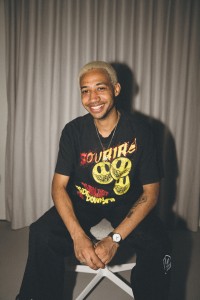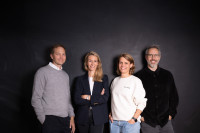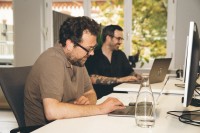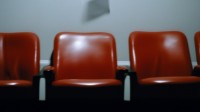The agency product goes beyond advertising
Agencies must break free from the hourly-rate treadmill. A product model brings clarity, security, and real value—while opening up space for creativity that truly makes an impact.
Kim Notz
29. October 2024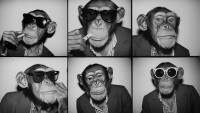
In many companies, it has become common practice to treat agency services as interchangeable commodities, purchased primarily on price. This approach has done significant damage to marketing. After all, the task of marketing is to differentiate brands and products—and that requires agencies that are radical and strategic, not interchangeable.
Of course, the price of agency services is highly relevant for both sides, but it should serve as an indicator of the value agencies create for marketing. The outdated business model based on billable hours, however, stands in the way. Time spent is meticulously logged down to the hour, entirely detached from the actual value generated.
What matters is value creation.
For agencies, the incentive is to increase billable hours; for clients, the goal is to push rates down. Both incentives lead in the wrong direction. What should matter for both sides is the outcome—the creative impact, the added value delivered. And that outcome, the agency’s product, needs a price that reflects its worth to the client.
Every product has a price, usually anchored to the value it brings to the customer and their willingness to pay. While that price is negotiable, the effort involved is determined solely by the producer. Products are standardized, which makes them comparable.
But in this case, effort is no longer the benchmark. Instead, the agency’s product itself becomes the indicator of value. The agency’s product is more than advertising—it is a driver of value creation and growth for companies. Which raises the crucial question: how does an agency move from the old world of billable hours to the new world of products?
From service model to product model.
In his 2023 book Madison Avenue Makeover, Michael Farmer describes this very transformation through the example of international digital agency Huge. Two years earlier, CEO Mat Baxter—who has since left the company—shifted Huge from a service-based to a product-based model to counter the problem of shrinking margins. Inspired by the book, we at KNSK became the first agency in the German market to take the same step.
A radical shift for agencies
The agency Huge and Michael Farmer’s book also served as a blueprint for the Swiss agency Wirz, as co-CEO Livio Dainese explained in episode #124 of the podcast What’s Next Agencies. While this provided both an example and a goal, the path to achieving it remained unclear. To chart that course, Wirz—like Huge before them—brought in the London-based consultancy The Business Model Company (TBMC).
TBMC has developed an approach to this transformation that is closer to a revolution. In practice, however, most of the work is carried out by the client—in this case, the agency itself. It is a demanding process that begins with a thorough analysis of the existing offering. At Wirz, an agency of just over 100 people, that offering included more than 300 different services, ranging from strategic brand checks to full film campaigns.
Established methods create security for clients.
But such a patchwork does little to provide clients with real assurance. Depending on which strategist or consultant leads a project, the process can look completely different. Instead of following proven methods, the wheel is reinvented time and again. This is true for many agencies—and it represents a missed opportunity, particularly from the client’s perspective.
Clients often seek security by purchasing hours. But that is the wrong kind of security, because what ultimately matters is the outcome, not a timesheet. Recognizing this, Wirz began by streamlining its own offering and deciding what it truly wanted to bring to market—a matter of strategy.
Up to now, agencies have often operated as a black box from the client’s point of view: a briefing goes in, and three weeks later, something resembling a first draft emerges, as if from a magician’s hat. Wirz has now moved away from this model, opting instead for structured, clearly defined approaches.
A deliberate path forward
In a product-based model, processes are defined by the client’s specific problem and broken down into phases and modules. This creates more room for what really matters: strategic and creative work. For the client, it becomes tangible and predictable, with clear timelines and deliverables at a defined price. For the agency, the risk remains that actual effort may exceed the original calculation.
This approach borrows from the expertise of consultancies, drawing on their models and processes to provide security. The outcome remains open and individual, but the path to get there is no accident. It contributes to the professionalization of agencies. And it doesn’t restrict creativity—quite the opposite, since we no longer need to reinvent the process every single time.
Clear structures create space for creativity.
For talent, it provides greater confidence and authority, even in client interactions, when know-how can be bundled and delivered as products. It also counters the commoditization of agency services, as products differ more distinctly from one agency to the next depending on their focus.
Ultimately, the system creates more room for creativity—for magic—by eliminating friction through better structures. The agency becomes more organized without abolishing creative chaos: more time for magic, and at its core, value instead of effort. Clients don’t want to buy hours; they want to buy value.
Internally, it also fosters a stronger awareness that we can solve far greater problems for clients than simply producing a nice film or chasing the next award. And in other service industries, productization has long been the norm. Our industry, by contrast, has resisted it for too long, hiding behind the shield of creativity to fend off standardized templates and methods. For years, creative chaos has dictated the process.
Creativity remains the ultimate superpower
Still, there are two major differences compared to consultancies. At the core of our processes and services lies creativity—the agency’s true superpower. And what we build has already been tested in the market. Because in the end, our real customer is the end consumer, not just the client who pays our invoices.
Turning an agency’s offering into products requires enormous thought and effort. It takes time to design processes and deliverables that are both simple and economically viable. Independent agencies have an advantage here: they can steer the ship themselves and make decisions freely.
Michael Farmer’s book is a quick read, and its central idea is immediately clear. The real work lies in creating products that deliver real impact for clients—products that generate value rather than just effort. And this process is far from finished; it is continuously refined, shaped by client demand.
The decisive shift to products as a breakthrough.
What it is not, however, is “brave.” What is truly brave is ignoring the need for change despite stagnating or declining numbers. Half-measures—such as simply calling for a return to creativity or squeezing out a bit more efficiency—will not be enough. The full-scale shift to a product model can be a genuine breakthrough.
Agencies are bought, merged, and shut down—but they are rarely transformed. Structurally, we are still working much the same way we did in the 1980s. We always have an ear to the zeitgeist, but the way we operate hasn’t fundamentally changed in forty years. We can solve problems with creativity and generate real effects, yet we continue to sell hours of artwork as if nothing had changed.
Creativity can make companies successful—and some of the world’s biggest businesses are marketing-driven. The demand for creativity today is immense, and agencies are better positioned to meet it than consultancies.
Find more here:
Kontakt
